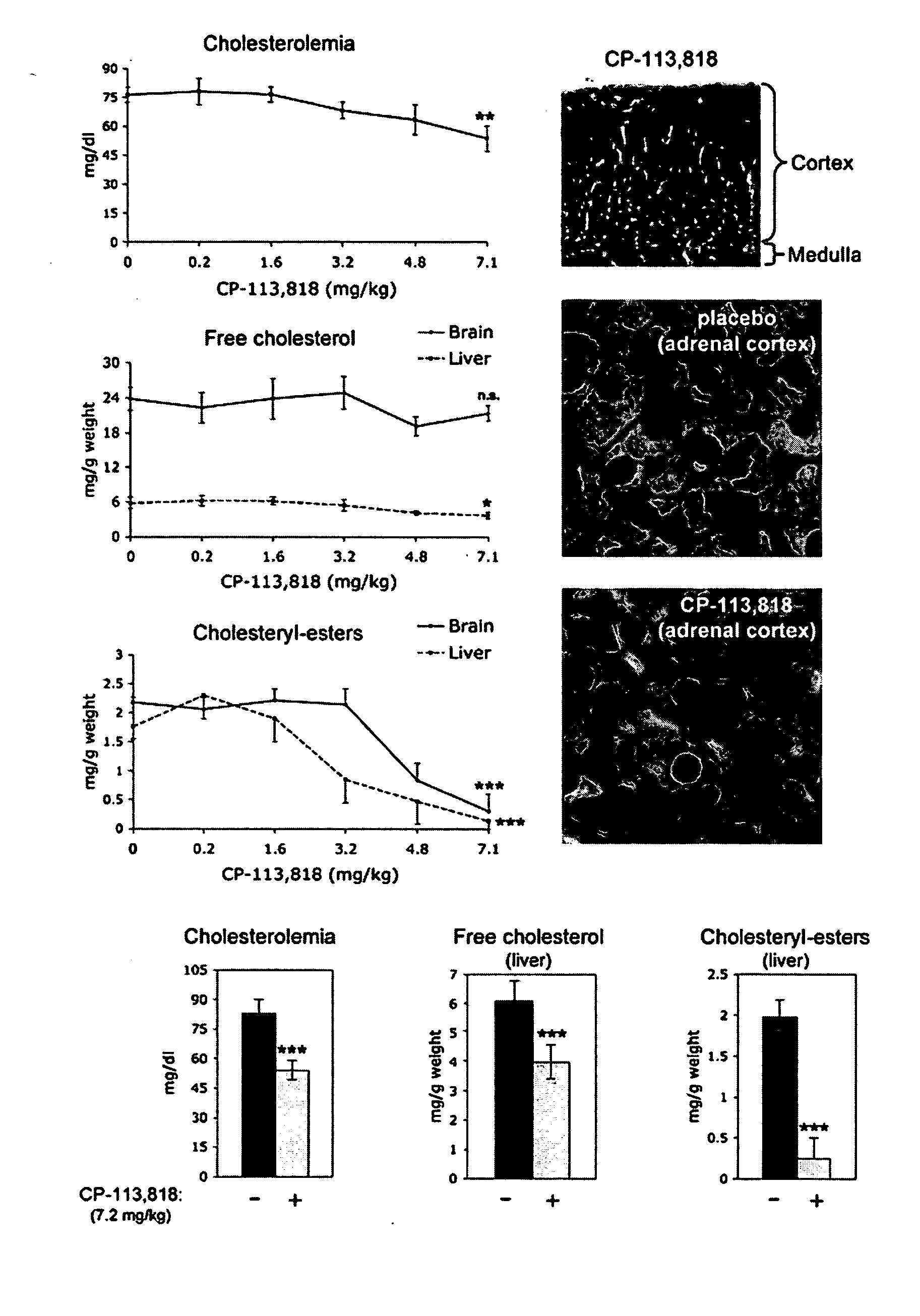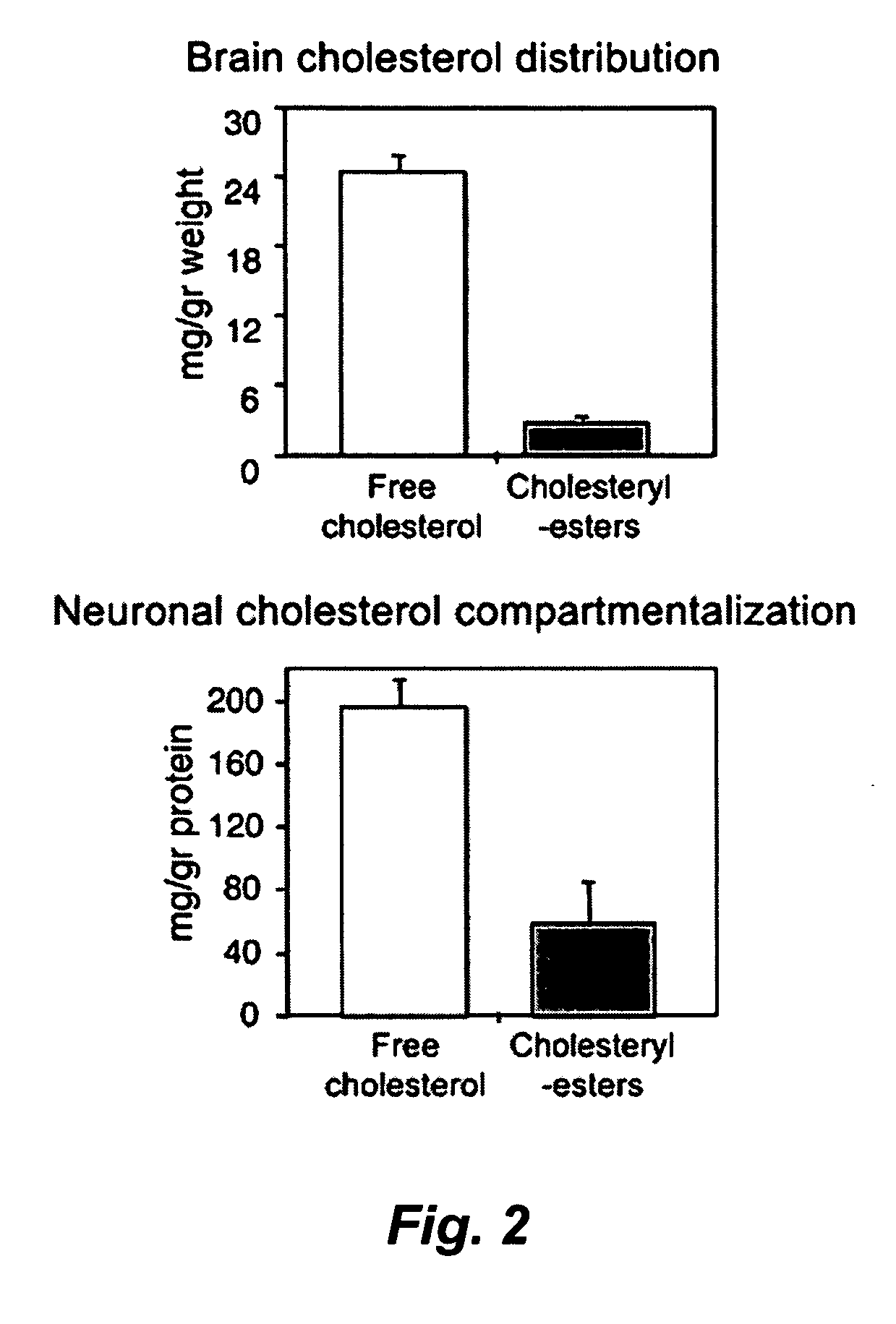Methods for treating ACAT-related diseases
a technology for acats and diseases, applied in the field of methods for treating acat-related diseases, can solve the problems of unsuitable therapeutic use for altering the ratio, and achieve the effect of effectively inhibiting acat, effective inhibition of acat, and effective treatment of acat-related diseases
- Summary
- Abstract
- Description
- Claims
- Application Information
AI Technical Summary
Benefits of technology
Problems solved by technology
Method used
Image
Examples
examples
Methods
Animals and Drug Treatment
[0091] hAPP transgenic mice overexpress human APP751 with the London (V717I) and Swedish (K670M / N671L) mutations under the regulatory control of the neuron specific murine (m)Thy-1 promoter (mThy-1-hAPP751; heterozygous with respect to the transgene, on a C57BL / 6 F3 background) (Rockenstein et al., 2001). The hAPP colony was sustained by crossing transgenic APP751 with C57BL / 6 (Harlan Winkelman, Germany). Corresponding littermates were used for control studies. All mice were housed according to standard animal care protocols, fed ad libitum with standard chow diet, and maintained in a pathogen-free environment in single ventilated cages at JSW Research. The transgenic status of each animal was confirmed by real time PCR of tail snips using specific primers and the appropriate hybridization probe. A modified Irvine test was regularly performed prior to the experiment to assess the neurological status of the animals; those showing disturbances were...
PUM
| Property | Measurement | Unit |
|---|---|---|
| Time | aaaaa | aaaaa |
| Level | aaaaa | aaaaa |
Abstract
Description
Claims
Application Information
 Login to View More
Login to View More - R&D
- Intellectual Property
- Life Sciences
- Materials
- Tech Scout
- Unparalleled Data Quality
- Higher Quality Content
- 60% Fewer Hallucinations
Browse by: Latest US Patents, China's latest patents, Technical Efficacy Thesaurus, Application Domain, Technology Topic, Popular Technical Reports.
© 2025 PatSnap. All rights reserved.Legal|Privacy policy|Modern Slavery Act Transparency Statement|Sitemap|About US| Contact US: help@patsnap.com



